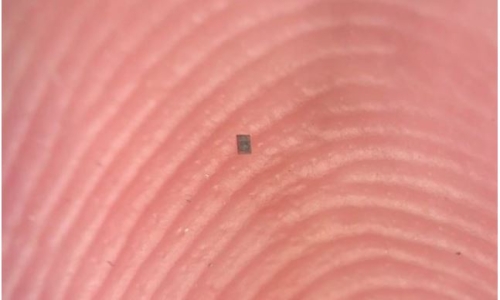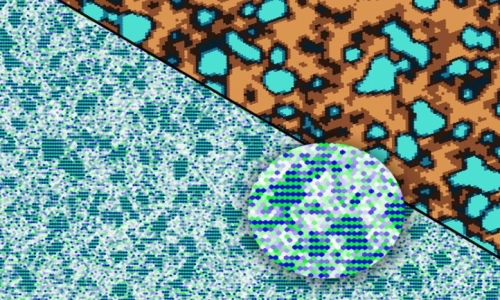


 5:32:23
5:32:23  2019-04-24
2019-04-24  1298
1298

New research, which appears in the journal Nature Communications, shows that delivering two small molecules to mice helps their hearts regenerate after a heart attack.
Heart disease is the leading cause of death in the United States and responsible for almost 1 in 4 deaths in the country.
An adverse cardiovascular event, such as a heart attack, typically damages the cells that make up the heart muscle.
These cells are called cardiomyocytes, and losing them puts people at risk of heart failure — a condition wherein the heart cannot pump blood effectively to the rest of the body.
The scientific consensus is that adult hearts can no longer create new cardiomyocytes. This inability is why the heart cannot regenerate itself after a heart attack when huge numbers of cardiomyocytes are lost.
New research, however, renews hope of protecting damaged heart tissue by using small molecules called microRNAs.
Why microRNAs are important for the heart
MicroRNAs control gene function and they can be found in abundance when the heart is developing.
Past research has identified a cluster of microRNAs called miR-17-92 that controls how cardiomyocytes proliferate. Da-Zhi Wang, Ph.D., a cardiology researcher at Boston Children's Hospital and a professor of pediatrics at Harvard Medical School in Boston, MA, led this previous research.
Now, Prof. Wang and his colleagues have zoomed in on two members of this microRNA family: miR-19a and miR-19b.
In the new study, Prof. Wang and his colleagues show how these two microRNA molecules can drive heart regeneration after myocardial infarction.
The findings could help prevent heart failure following a heart attack, which is, according to the researchers, "the leading cause of mortality and morbidity in humans."
The short- and long-term effect of microRNAs
Prof. Wang and team used a mouse model of a heart attack and delivered the microRNAs in two different ways.
Firstly, they administered the lipid-coated molecules directly to the mice. Secondly, the researchers placed the microRNAs in an adeno-associated virus — that is, a gene therapy vector that targeted the heart.
With both delivery methods, the results were promising, both in the long term and in the short term.
Namely, in the first 10 days after a heart attack, the microRNAs reduced cell death and stopped the inflammatory reaction that typically damages the heart muscle during a heart attack.
The researchers also carried out a genome-wide transcriptome analysis that revealed how miR-19a/19b repressed the genes that controlled the inflammatory response and acute cell death.
Over time, the hearts of the mice that received the molecules had more healthy tissue, less damaged tissue, better heart muscle contractility, and reduced dilated cardiomyopathy — a condition in which the heart muscle thins, which, ultimately, weakens the heart.
"The initial purpose is to rescue and protect the heart from long-term damage," explains Prof. Wang. "In the second phase, we believe microRNAs help with cardiomyocyte proliferation."
The advantages of microRNA therapy
The researchers go on to explain the benefits of microRNA therapy. Unlike gene therapy, they say, the microRNA molecules do not stay in the heart after they have fulfilled their purpose.
"They go in very fast and do not last long, but they have a lasting effect in repairing damaged hearts," explains one of the corresponding authors of the study, Jinghai Chen, Ph.D.
"We gave mice only one shot when the heart needed the most help, then [...] we kept checking expression level of miRNA19a/b post-injection," adds Chen. "After one week, expression decreased to a normal level, but the protection lasted for more than one year."
"MicroRNAs hold tremendous promise to become powerful tools to battle cardiovascular disease," write the researchers, who are next planning to test the treatment in a larger mammal before moving on to human studies. Prof. Wang and colleagues conclude:
"[M]iR-19a/19b-mediated early cardiac protection could open a window to the development of effective therapy for heart attack and bring great benefits to heart failure patients."
Ana Sandoiu, Medical News Today
Reality Of Islam |
|

A tiny robo

By applying

Stanford, C

A new study
 9:3:43
9:3:43
 2018-11-05
2018-11-05
10 benefits of Marriage in Islam
 7:5:22
7:5:22
 2019-04-08
2019-04-08
benefits of reciting surat yunus, hud &
 9:45:7
9:45:7
 2018-12-24
2018-12-24
advantages & disadvantages of divorce
 11:35:12
11:35:12
 2018-06-10
2018-06-10
 6:0:51
6:0:51
 2018-10-16
2018-10-16
 5:58:12
5:58:12
 2021-12-18
2021-12-18
 8:15:37
8:15:37
 2023-02-16
2023-02-16
 9:30:2
9:30:2
 2021-11-12
2021-11-12
 2:42:26
2:42:26
 2023-02-02
2023-02-02
 8:39:51
8:39:51
 2022-09-23
2022-09-23
 7:26:19
7:26:19
 2022-04-08
2022-04-08
 1:34:8
1:34:8
 2022-02-01
2022-02-01
 5:41:46
5:41:46
 2023-03-18
2023-03-18
| LATEST |